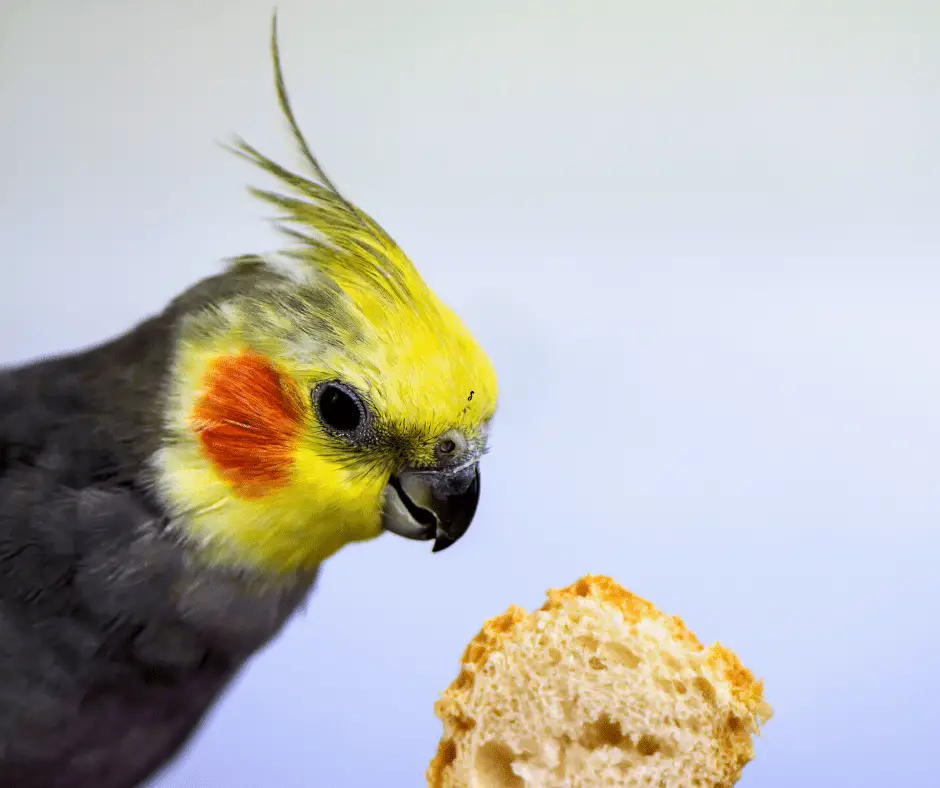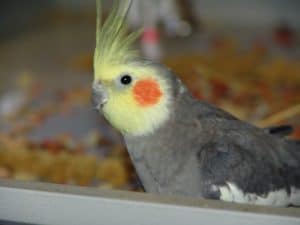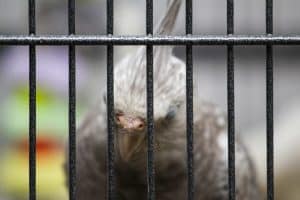Cockatiel beak trimming is an essential part of maintaining the health and well-being of your pet bird. An overgrown cockatiel beak can cause various health issues, such as difficulty eating, drinking, or even respiratory problems. This blog post will provide you with all the information you need to know about cockatiel beak length, when do cockatiels need their beaks trimmed, and how to trim a cockatiel’s beak safely and effectively.
Why Is My Cockatiel’s Beak So Long?
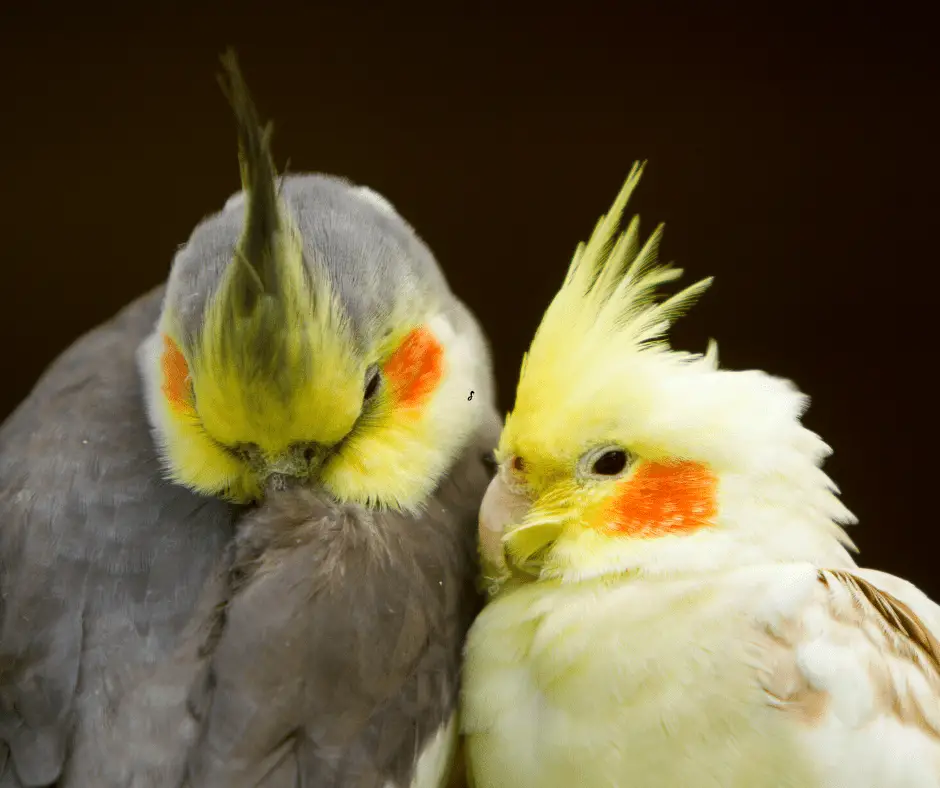
A cockatiel’s beak grows continuously throughout its life, much like our fingernails. In the wild, birds use their beaks for a variety of activities such as preening their feathers and cracking open seeds. Since captive cockatiels don’t have access to these activities, their beaks can grow excessively long if they are not trimmed regularly.
An overgrown beak can cause your cockatiel discomfort and make it difficult for the bird to eat and drink properly. Trimming your cockatiel’s beak will help keep it healthy and comfortable.
Why You Need to Trim Your Cockatiel’s Beak
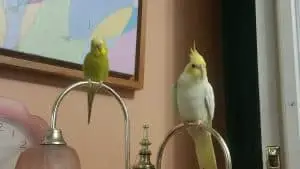
As your cockatiel grows, so does its beak. Just like our fingernails and toenails, a cockatiel’s beak needs to be regularly trimmed. If you don’t trim your cockatiel’s beak, it can begin to curve downwards and cause your bird discomfort when eating.
In addition, an overgrown beak can make it difficult for your cockatiel to preen properly, which can lead to health problems. Therefore, it’s important to get into the habit of trimming your cockatiel’s beak every few weeks.
Signs of an Overgrown Cockatiel Beak
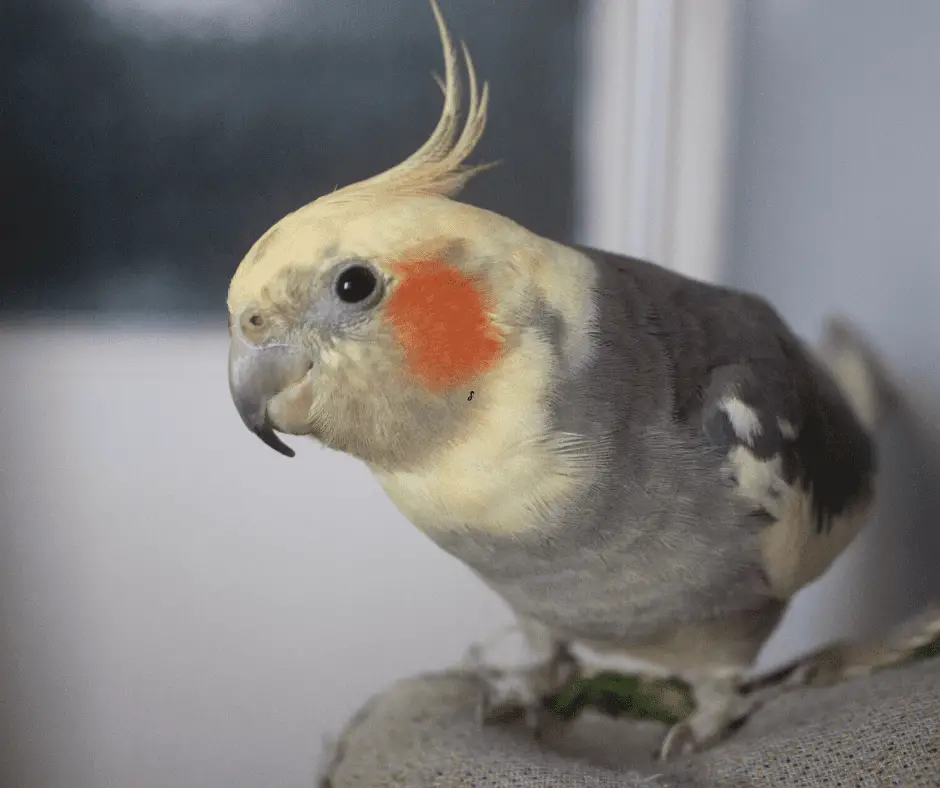
An overgrown cockatiel beak can cause your bird pain and discomfort, leading to difficulty eating or drinking. It can also change the appearance or shape of the bird’s beak, leading to health issues such as respiratory problems or mouth infections. Some signs of an overgrown beak include:
1. Difficulty eating or drinking: If your cockatiel is struggling to eat or drink, it could be due to an overgrown beak. In severe cases, it can lead to malnutrition or dehydration if not addressed promptly.
2. Changes in appearance or shape of the beak: An overgrown beak may appear longer than usual or have an abnormal shape. The upper and lower beak may not align properly, causing difficulty in eating and grooming.
3. Respiratory issues or mouth infections: An overgrown beak can lead to breathing problems or infections as food and debris can become trapped in the beak, leading to bacterial growth.
How to Trim a Cockatiel’s Beak
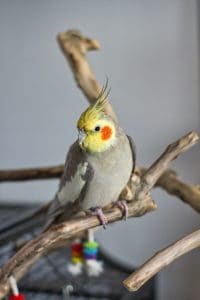
The good news is that trimming a cockatiel’s beak is relatively easy to do and only takes a few minutes. You will need a sharp pair of nail clippers or bird-safe scissors for this task. It’s also important to have a cup of water on hand in case you accidentally cut too much off of your cockatiel’s beak. When trimming your cockatiel’s beak, follow these steps:
1) Gently hold your bird in one hand and use the other hand to open its mouth slightly.
2) Take a look at the inside of your cockatiel’s mouth and locate its upper mandible (the top part of its two-part beak). You want to avoid cutting the lower mandible as this can cause bleeding.
3) Once you’ve found the upper mandible, lightly snip off any overgrown edges with your nail clippers or scissors. Try not to cut too much at once as you can always trim more if necessary.
4) Repeat steps 1-3 for the lower mandible (the bottom part of the two-part beak).
5) Give your cockatiel a treat as a reward for being such a good bird during the trimming process!
How Long is the Normal Beak of a Cockatiel?
The normal cockatiel beak length is about 0.75 to 0.875 inches. However, the beak can grow up to an inch or more in length if it is not trimmed regularly. The proper length of a cockatiel’s beak is important for the bird’s overall health and well-being.
Necessary Tools and Materials for Beak Trimming
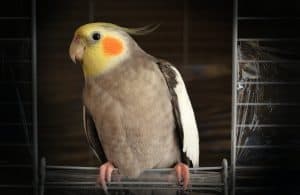
Before you start trimming your cockatiel’s beak, you’ll need to gather the proper tools and materials. These include:
1. A proper bird beak trimmer or nail file: A beak trimmer designed specifically for birds is essential for a safe and effective trim. You can also use a nail file or emery board as an alternative.
2. Styptic powder or cornstarch: In case of accidental bleeding, having styptic powder or cornstarch on hand can help stop the bleeding quickly.
3. A towel for restraint: Wrapping your cockatiel in a towel can help keep them calm and secure during the trimming process.
4. Calming aid (optional): Some cockatiels may become stressed during beak trimming. Using a calming aid, such as a calming spray or supplement, can help keep your bird calm and comfortable during the process.
5 Ways to Prevent an Overgrown Beak in Your Pet Cockatiel
An overgrown beak is not only unsightly, but it can cause your pet parrot a great deal of discomfort. If you have a pet bird, you know how important it is to keep its beak trimmed and in good condition. Here are five ways to prevent an overgrown beak in your pet parrot:
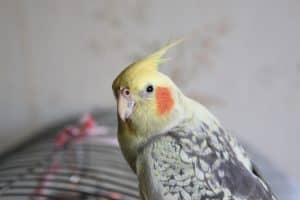
- Provide your parrot with plenty of toys to chew on. Chewing is a natural activity for birds, and it helps keep their beak trimmed down. Offer your parrot a variety of different toys to chew on, such as wooden blocks, rope ladders, or bird-safe chewing toys.
- Make sure your parrot has a balanced diet. A healthy diet is important for your parrot’s overall health, including its beak. Make sure you are feeding your parrot a variety of different foods, including seeds, fruits, vegetables, and pellets.
- Provide your parrot with a cuttlebone. A cuttlebone is a good source of calcium and other minerals that are important for your parrot’s health. It also helps keep their beak trimmed.
- Give your parrot regular baths. Bathing is not only good for your parrot’s feathers, but it also helps keep their beak clean and free of debris. Give your parrot a lukewarm bath at least once a week.
- Take your parrot to the vet for regular check-ups. Your vet can trim your parrot’s beak if it becomes overgrown. They can also check for any other health problems that may be causing an overgrown beak.
A healthy beak is important for your pet cockatiel’s overall health and well-being. By following these tips, you can help prevent an overgrown beak in your pet parrot.
- Challenges Your Parrot Mentally & Physically --- Toys are a necessity for parrots. They provide essential physical activity so that our intelligent feathered pets stay healthy. Bird Chewing Toy by SunGrow provides opportunities for parrots in the cage which they undertake when living in their native habitat. There are several multi-colored blocks in this single toy to make your bird active. These blocks are arranged in multiple layers to climb and explore.
- Entertaining Toy For Your Birds --- A parrot with nothing to do is a prime candidate for behavioral problems. Some parrots tend to be more disruptive during certain times of the year, usually during their breeding period. SunGrows bird chewing and preening toy is a perfect companion to keep your parrots busy, less disruptive and have more fun hours which keep them active mentally.
- Edible Chew Toy --- It is important for the avian species that we keep something for them to chew on. In their native habitat, they engage in chiseling holes and tearing up branches. This is something innate to them. The wooden blocks chew toy by SunGrow is made from wood and cotton rope. So when they nudge on to their toy, it would keep them content. So if you dont spot your green cheek outside playing, just hover a little inside. They might be hiding amongst the blocks and savoring them.
- Right Size For Your Bird --- The Bird Chewing Toy by SunGrow comes with a standard size of 40cm (15.7) x 10cm (3.9) and fits well in your beloved feathered pets cage. The included metal buckle holds this toy in place. Its crunch potential is ideal for small parrots and medium-sized, conure-sized birds. It is suggested for macaws, African greys, Cockatiels, Cockatoos, Budgies, Lovebirds, pigeons, and a variety of Amazon parrots as well.
Aftercare and Ongoing Beak Maintenance
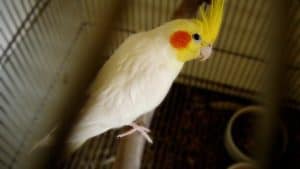
Proper beak maintenance is essential for keeping your cockatiel healthy and comfortable. Here are some tips for ongoing beak care:
1. Provide appropriate toys and perches: Providing your cockatiel with toys and perches designed for beak wear can help keep their beak naturally filed down, reducing the need for frequent trims.
2. Monitor your cockatiel’s beak growth: Keep an eye on your cockatiel’s beak length, and trim as needed to maintain a healthy beak.
3. Consult with an avian veterinarian: If you have any concerns or issues regarding your cockatiel’s beak, don’t hesitate to consult with an avian veterinarian for advice and guidance.
When to Consult a Professional

There are instances when it’s best to consult a professional for cockatiel beak trimming, such as:
1. If you are unsure about proper beak trimming techniques and would like guidance from an experienced professional.
2. If your cockatiel has a severely overgrown or damaged beak that requires more extensive trimming or care.
3. If your cockatiel shows signs of illness or infection related to beak growth, such as respiratory issues or mouth infections.
Final Thoughts
Regular beak maintenance is crucial for keeping your cockatiel healthy and comfortable. By monitoring your cockatiel’s beak growth and trimming as needed, you can prevent health issues and ensure your pet bird remains happy and healthy. Don’t hesitate to consult with professionals when needed, as they can provide valuable guidance and support in maintaining your cockatiel’s beak health.
Other suggested articles:
Why Do Birds Rub Their Beaks? (Top 5 Reasons)
Understanding and Coping with Cockatiel Beak Banging as a Pet Owner
- How Can Your Other Pets Be Harmful To Your Cockatiel
- How Cockatiels Show Affection
- How Do Children Make Cockatiels As Pets
- How Do Cockatiels See
- How Do Cockatiels Sleep
- How Do Fumes Affect Your Cockatiel
- How Do You Care For Your Cockatiel Everyday
- How Do You Choose A Cage For Your Cockatiel
- How Do You Medicate Cockatiels
- How Do You Provide Your Cockatiel With Water
- How Do You Select Your Cockatiel
- How Do You Tame A Cockatiel
- How Does A Cockatiel Got Her Name
- How Far Can A Cockatiel Fly
- How Far Can A Cockatiel See
- How Fast Can Cockatiels Fly
- How Good Is A Cockatiels Memory
- How Long Can A Cockatiel Go Without Food
- How Long Can Cockatiels Go Without Water
- How Long Do Cockatiels Actually Live For In Captivity
- How Long Do Cockatiels Live In Captivity
- How Long Does It Take For Clipped Wings To Grow Back
- How Long Does It Take For Cockatiel Tail Feathers To Grow Back
- How Long Should A Cockatiel Be Out Of Its Cage
- How Often Do Cockatiels Lay Eggs
- How Often Do Cockatiels Poop
- How Often Should A Cockatiel Go To The Vet
- How Should I Set Up My Cockatiels Cage
- How To Bathe Your Cockatiel
- How To Bird Proof A Room
- How To Bond Two Cockatiels
- How To Bond With A Scared Cockatiel
- How To Build Trust With A New Cockatiel
- How To Calm A Stressed Cockatiel
- How To Care For Your Cockatiels Health
- How To Care For Your Cockatiels Nails
- How To Catch A Cockatiel
- How To Clean Cockatiel Nose
- How To Clip A Cockatiels Nails
- How To Discipline A Cockatiel
- How To Find A Cockatiel That Flew Away
- How To Get A Cockatiel Back Into Its Cage
- How To Get A Cockatiel To Go On Your Hand
- How To Get A Cockatiel To Like You
- How To Get A Cockatiel To Sit On Your Finger
- How To Give Your Cockatiel Exercise
- How To Grow Millet For Cockatiels
- How To Hold A Cockatiel
- How To Introduce A New Cockatiel To Another
- How To Keep A Cockatiel Quiet
- How To Keep A Cockatiel Warm 10 Tips And Tricks
- How To Maintain A Clean Cockatiel Cage
- How To Make Your New Cockatiel Feel At Home
- How To Manage Multiple Cockatiels In One Household
- How To Monitor Your Cockatiels Health
- How To Prepare Your Cockatiel For Travel
- How To Prevent Your Cockatiel From Becoming Stressed
- How To Recognize And Treat Cockatiel Anxiety
- How To Take Care Of An Older Cockatiel
- How To Tame A Cockatiel That Bites
- How To Tame Your Cockatiel
- How To Teach A Cockatiel To Talk
- How To Tell If A Cockatiel Is In Pain
- How To Tell The Age Of A Cockatiel
- How To Toilet Train Your Cockatiel
- How To Train A Cockatiel To Fly To You 8 Steps
- How To Train A Cockatiel To Poop In One Place
- How To Train Naughty Cockatiels
- How To Transition Your Cockatiel To A New Cage
- How To Transport A Cockatiel To The Vet
- How To Trim A Cockatiels Beak
- How To Trim Your Cockatiels Wings
